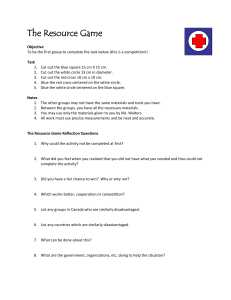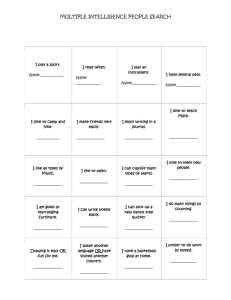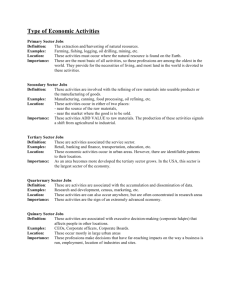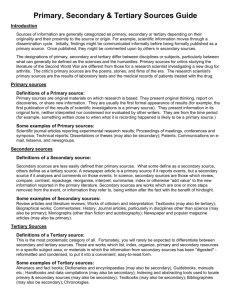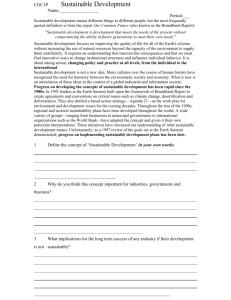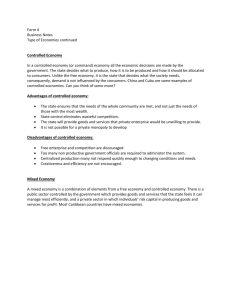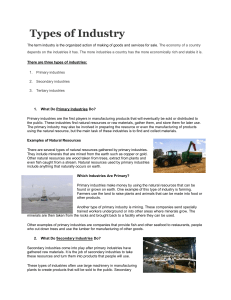Class Exercise
advertisement
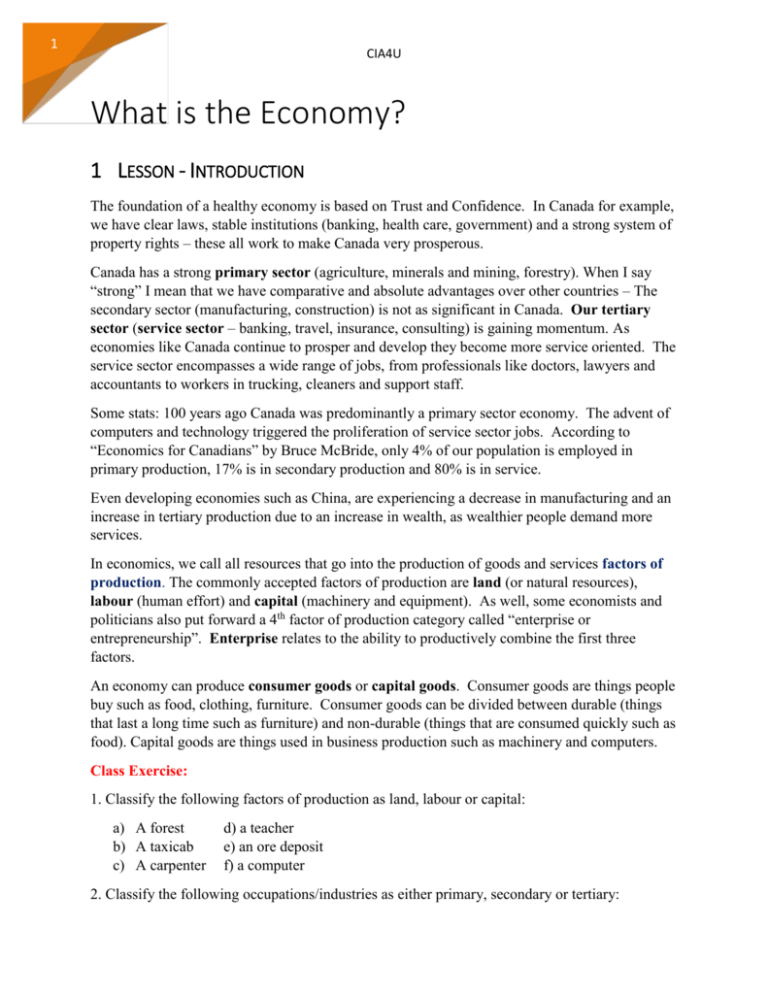
1 CIA4U What is the Economy? 1 LESSON - INTRODUCTION The foundation of a healthy economy is based on Trust and Confidence. In Canada for example, we have clear laws, stable institutions (banking, health care, government) and a strong system of property rights – these all work to make Canada very prosperous. Canada has a strong primary sector (agriculture, minerals and mining, forestry). When I say “strong” I mean that we have comparative and absolute advantages over other countries – The secondary sector (manufacturing, construction) is not as significant in Canada. Our tertiary sector (service sector – banking, travel, insurance, consulting) is gaining momentum. As economies like Canada continue to prosper and develop they become more service oriented. The service sector encompasses a wide range of jobs, from professionals like doctors, lawyers and accountants to workers in trucking, cleaners and support staff. Some stats: 100 years ago Canada was predominantly a primary sector economy. The advent of computers and technology triggered the proliferation of service sector jobs. According to “Economics for Canadians” by Bruce McBride, only 4% of our population is employed in primary production, 17% is in secondary production and 80% is in service. Even developing economies such as China, are experiencing a decrease in manufacturing and an increase in tertiary production due to an increase in wealth, as wealthier people demand more services. In economics, we call all resources that go into the production of goods and services factors of production. The commonly accepted factors of production are land (or natural resources), labour (human effort) and capital (machinery and equipment). As well, some economists and politicians also put forward a 4th factor of production category called “enterprise or entrepreneurship”. Enterprise relates to the ability to productively combine the first three factors. An economy can produce consumer goods or capital goods. Consumer goods are things people buy such as food, clothing, furniture. Consumer goods can be divided between durable (things that last a long time such as furniture) and non-durable (things that are consumed quickly such as food). Capital goods are things used in business production such as machinery and computers. Class Exercise: 1. Classify the following factors of production as land, labour or capital: a) A forest b) A taxicab c) A carpenter d) a teacher e) an ore deposit f) a computer 2. Classify the following occupations/industries as either primary, secondary or tertiary: 2 CIA4U a) Teacher b) Fitness Instructor c) Trapper f) Mechanic in a repair shop g) Waiter d) Carpenter e) Web designer h) Sawyer in a lumber mill 3. Name one specific technology/piece of equipment that has led to many fewer Canadians being employed in the primary sector now as compared to in the past. 4. Explain how the problem of scarcity is inherent in each of the following situations by identifying the limited resources and the unlimited wants: a) You want to go out with your friends to the movies buy you also want to play basketball with your neighbours. b) You are a government minister in charge of roads and you recognize that improving rural roads and improving the highways are both important, but that your budget will only allow you to do one or the other. Label the diagram below with the appropriate words from this lesson:
